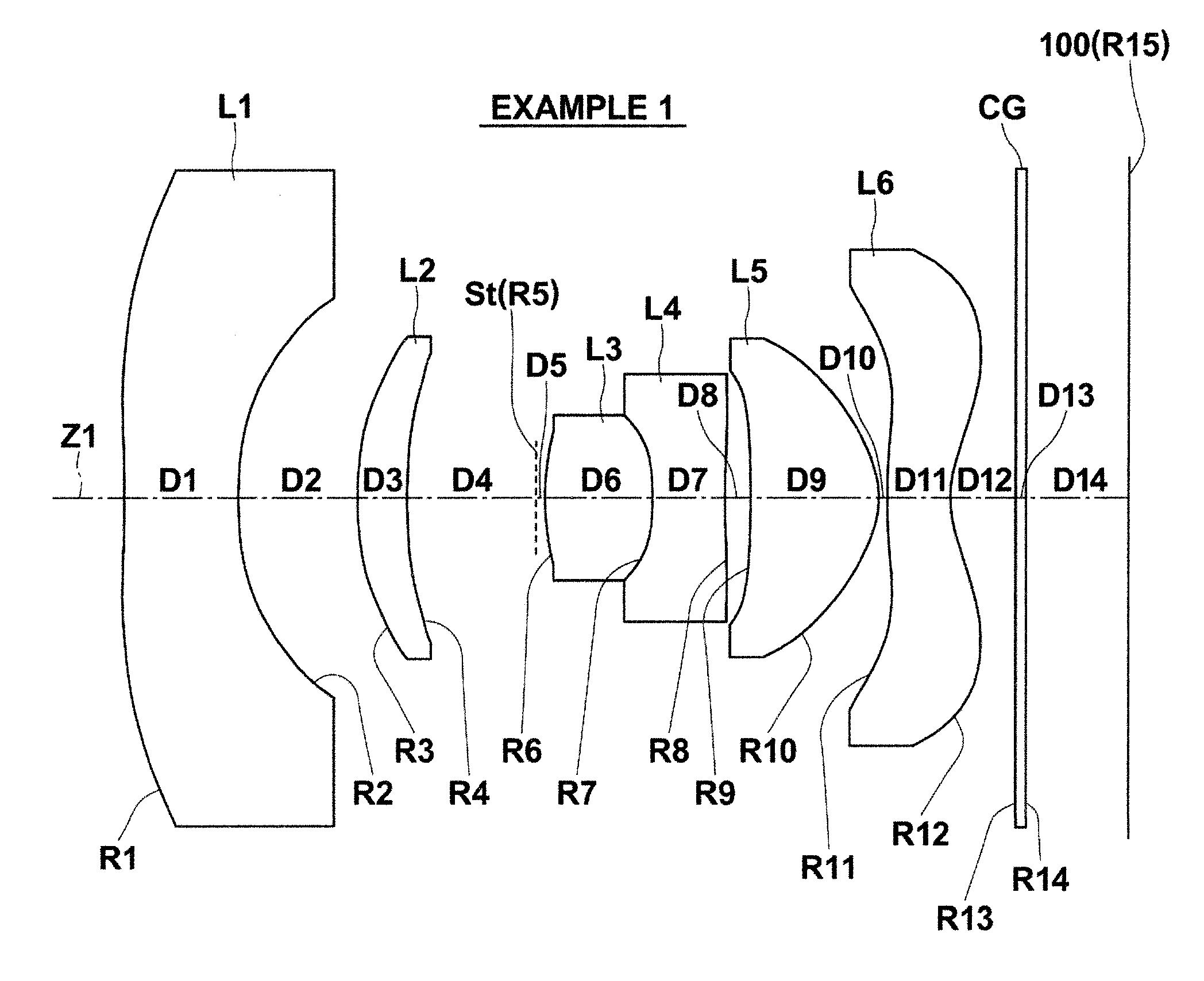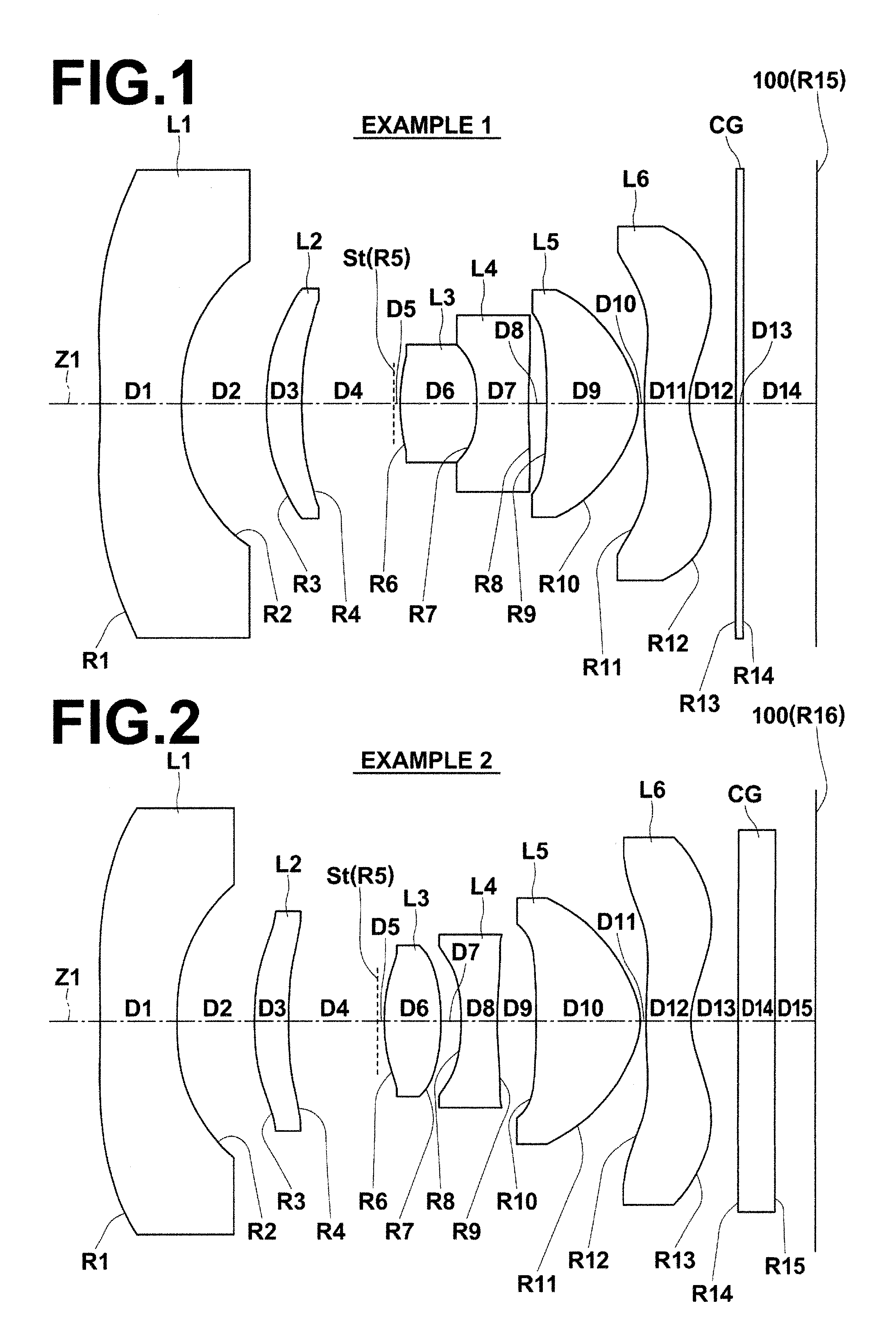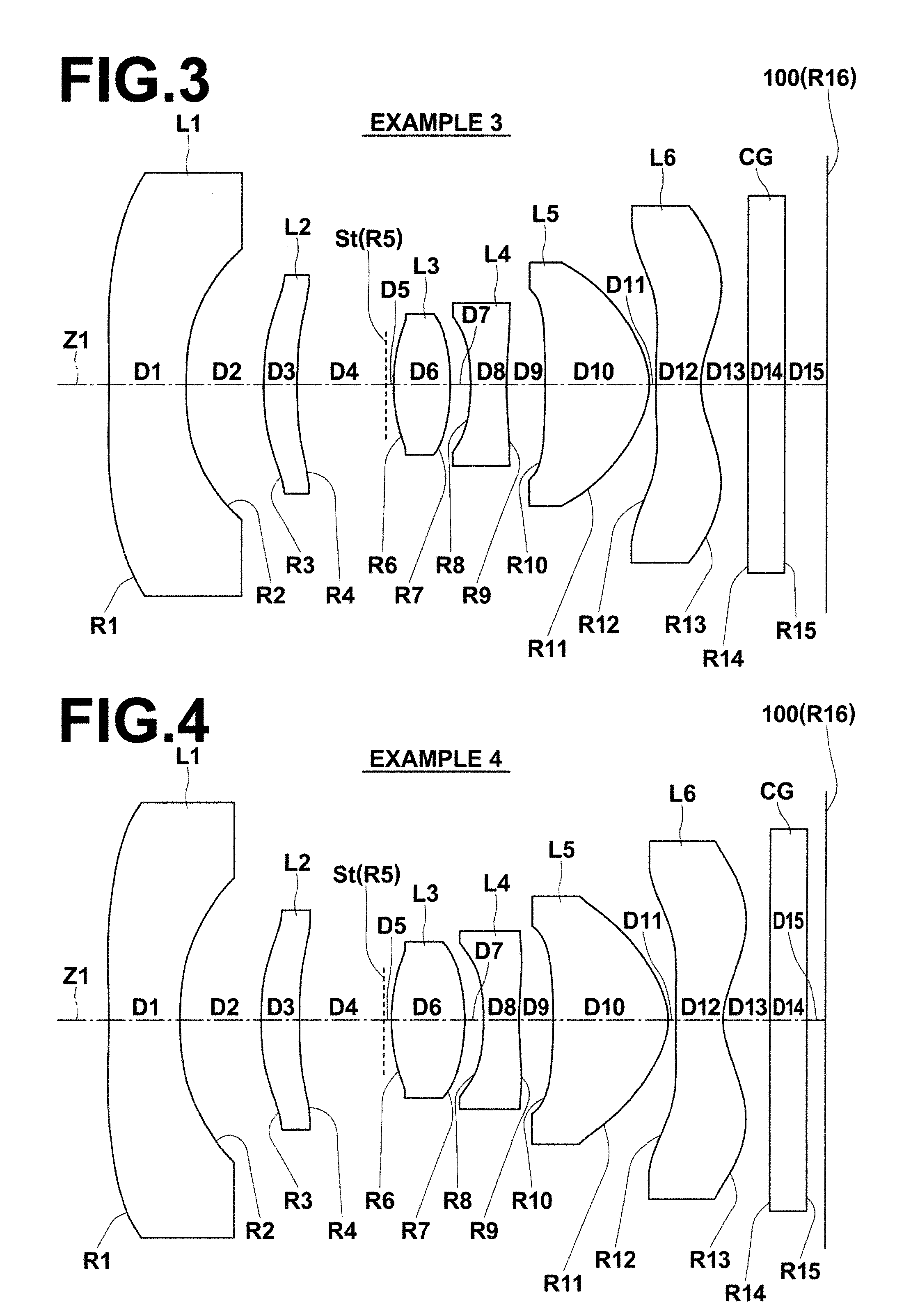Imaging lens and imaging apparatus equipped with the imaging lens
a technology of imaging lens and imaging apparatus, which is applied in the field of fixed focus imaging lens, can solve problems such as insufficient correction of distortion
- Summary
- Abstract
- Description
- Claims
- Application Information
AI Technical Summary
Benefits of technology
Problems solved by technology
Method used
Image
Examples
Embodiment Construction
[0057]Hereinafter, embodiments of the present invention will be described in detail with reference to the attached drawings.
[0058]FIG. 1 illustrates a first example of the configuration of an imaging lens according to an embodiment of the present invention. This example corresponds to the lens configuration of Numerical Example 1 (Table 1 and Table 2), to be described later. Similarly, FIG. 2 through FIG. 4 are sectional diagrams that illustrate second through fourth examples of lens configurations that correspond to Numerical Examples 2 through 4 (Table 3 through Table 8). In FIGS. 1 through 4, the symbol Ri represents the radii of curvature of ith surfaces, i being lens surface numbers that sequentially increase from the object side to the image side (imaging side), with the surface of a lens element most toward the object side designated as first. The symbol Di represents the distances between an ith surface and an i+1st surface along an optical axis Z1. Note that the basic confi...
PUM
 Login to View More
Login to View More Abstract
Description
Claims
Application Information
 Login to View More
Login to View More - R&D
- Intellectual Property
- Life Sciences
- Materials
- Tech Scout
- Unparalleled Data Quality
- Higher Quality Content
- 60% Fewer Hallucinations
Browse by: Latest US Patents, China's latest patents, Technical Efficacy Thesaurus, Application Domain, Technology Topic, Popular Technical Reports.
© 2025 PatSnap. All rights reserved.Legal|Privacy policy|Modern Slavery Act Transparency Statement|Sitemap|About US| Contact US: help@patsnap.com



